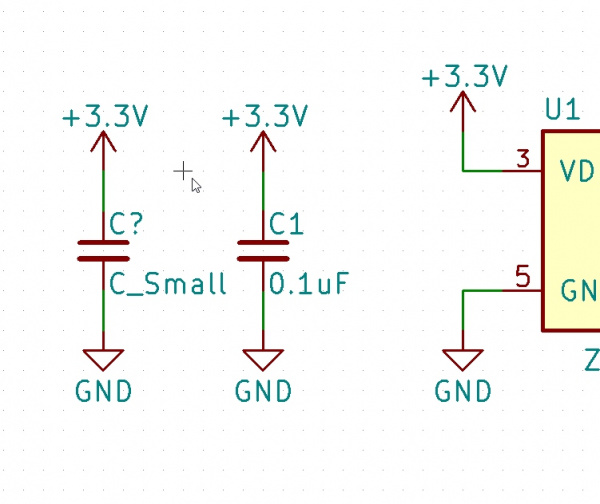You’ll have your “jumper” presented as a copper track on the front side. The advantage of this method is in flexibility: you won’t be limited by the size of the “jumper” component, it could cross other footprints too like real jumper wire could, contrary to a dedicated component which couldn’t. Where To Place Jumper Wires Layout Kicad Info Forums Mouse Jumping Feature Removal Feature Request Chat Kicad Info Kicad Adding Bridges Links To Single Sided Pcb Layouts Where S Jumper Wire In Cvpcb Association Cvpcb Kicad Info Issues With Jumpers Issue 743 Kicad Kicad Symbols Github Some Questions About A Tactile Switch Footprints Kicad Info. In KiCad's Pcbnew, open the ZOPT220x Breakout and click on Dimensions - Pads Mask Clearance. KiCad's solder mask clearance has a default of 0.2mm per side. We recommend you change this value to 0.1mm. Most fab houses will use 0.1mm as their default as well. You will then need to re-export your gerbers and load them back into GerbView. You need to learn how to live with it, and follow the restrictions it places on your layout. Look into the KiCAD manual. You need to change the net labels on the pins to match the net they should be connected to. I'm on my phone, so I can't look this up in KiCAD itself right.
Jumper is a tiny electrical device which is used to close or open part of an electronic circuit. It can be used as an alternative to a DIP (dual in-line package) switch.

A jumper is made of two or more electrically conductive jumper pins and jumper box. The set of electrically conductive pins is separated from each other by a plastic material.

The jumper box is made up of an electrically conductive material which easily allows electric current through it and this electrically conductive material is covered with a non-conductive plastic block to prevent accidental short circuits.
A set of electrically conductive pins are mounted to the PCB (Printed Circuit Board) in such a way that pins are standing in a vertical direction to the PCB. The electrically conductive jumper pins are arranged in groups called jumper blocks. Each block contains at least one pair of contact points. These contact points can be closed by a jumper box.
Jumpers are like on and off switches that we use in our homes. For example, when the switches are turned off, the conductive path will be opened, so the current will not flow to the home equipments such as light, fan and washing machine. As a result, the equipments will not be turned on.

When you turn on the switches, the conductive path will be closed, so the current will starts flowing to the home equipment’s such as light, fan and washing machine. As a result, the equipment’s will be turned on.
When at least two pins are covered with a jumper box, it is called a closed jumper. When pins are not covered with a jumper box, it is called an open jumper.
Kicad Jumper Wire Connectors
When the jumper pins are closed by a jumper box, an electrical connection is made between the pins and the equipment is thus instructed to activate certain settings accordingly. In simple words, when the jumper pins are closed by a jumper box, an electrical connection is made between the pins and the part of an electronic circuit will be closed.
Destroyer magazine models. Jumpers are used to configure the settings of computer peripherals such as the motherboard, sound cards, hard drives, and other components.
In older computers, jumpers need to be manually set on a motherboard to set CPU speed and voltage. Sony. Since the beginning of Printed Circuit Boards (PCBs), jumpers are in use.
Kicad Jumper Wire Diagram
In single layer circuit boards, a short length of wire is soldered between a pair of points. The wires are called jumpers. But unlike the normal jumpers, they will not act like switches. These jumper wires are used to permanently close two points in a circuit. The jumper wires are commonly used to solve the electronic layout issues of the printed wiring. They provide connections that would require routing of the conductive traces. Sometimes, zero ohm resistors are used instead of this jumper wires, because jumper wires need to be installed manually which will take more time but the zero ohm resistors are installed by the same robotic insertion machines that install real resistors, capacitors and other components.
